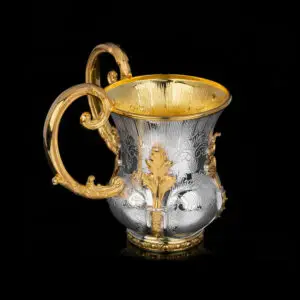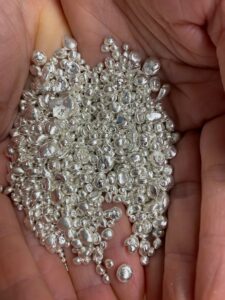
Gold Silver Ratio (GSR)
The Gold-Silver Ratio (GSR) has been a pivotal metric in the world of precious metals, serving as a barometer for market trends, economic health, and investment strategies. It’s a fundamental indicator that compares the relative values of gold and silver. Investors and economists often use this ratio to gauge market conditions, assess potential investment opportunities, and make informed decisions. Understanding the dynamics and implications of the GSR is crucial for anyone interested in precious metal investments.
What is the Gold-Silver Ratio
The Gold-Silver Ratio is a simple mathematical calculation that indicates how many ounces of silver are required to purchase one ounce of gold. Historically, this ratio has varied significantly over time, often fluctuating due to economic, geopolitical, and market influences
Historical Significance
Throughout history, the GSR has experienced notable shifts. Traditionally, the ratio has hovered around 15:1 to 16:1, reflecting the natural abundance ratio of gold to silver in the Earth’s crust. However, due to various factors like mining techniques, industrial demand, and market speculation, this ratio has evolved and is around 85:1 in 2023
Economic Indicators
The GSR serves as an economic indicator, reflecting market sentiment and investors’ perceptions of economic stability. During uncertain times or financial crises, investors tend to flock to gold, considering it a safe-haven asset, which can drive the ratio higher as gold’s value increases relative to silver. Conversely, in periods of economic growth and stability, silver, often considered both a precious metal and an industrial commodity, may outperform gold, leading to a lower GSR.
Investment Implications
Understanding the GSR can influence investment strategies in the precious metals market. A high ratio might indicate that silver is undervalued relative to gold, potentially signaling a buying opportunity for silver. Conversely, a low ratio could suggest that gold is undervalued compared to silver, prompting investors to lean towards gold purchases
Recent Trends and Analysis
In recent years, the GSR has seen fluctuations, sometimes reaching historical highs of around 100:1 or more, indicating periods where silver has been relatively undervalued compared to gold. However, it’s essential to note that extreme ratios often correct themselves over time, either through adjustments in the prices of gold, silver, or both.
Factors Influencing the GSR
Several factors impact the Gold-Silver Ratio, including
Industrial Demand: Silver’s extensive industrial applications can affect its demand and, consequently, its value relative to gold
Market Speculation: Sentiment and speculation within the investment community can significantly influence the ratio
Monetary Policy: Central bank actions, interest rates, and inflationary pressures can impact the value of both gold and silver
Conclusion
The Gold-Silver Ratio is a dynamic indicator that reflects the relationship between two of the most sought-after precious metals in the world. Understanding its historical trends, economic implications, and the factors affecting its fluctuations is vital for investors seeking to navigate the precious metals market
While the GSR can provide valuable insights, it’s essential to combine it with comprehensive market analysis, economic indicators, and individual investment goals before making any investment decisions. Whether using it as a tool for diversification, hedging against inflation, or capitalizing on market trends, the Gold-Silver Ratio remains a critical metric in the world of precious metal investments
For short video explanation press VIDEO

A Guide to Major Gold Exchanges Around the World
Where is Gold Traded? A Guide to Major Gold Exchanges Around the World Gold has been a cornerstone of finance and investment for centuries, valued

Metal Detector – Professional Gold and Silver Detector
Metal Detector for Adults – Professional Gold and Silver Detector with LCD Display, High Accuracy Waterproof Pinpoint 5 Modes, 10″ Coil Lightweight Metales Detectors

Essential Guide to Non-Destructive Testing for Precious Metal Authentication
BLOG #1 May -10-2024 Welcome to the inaugural post of “Precious Metals Mechanics by Ami Gur.” In this series, we embark on a journey

About The Blog
Welcome to “Precious Metals Mechanics—by Ami Gur.” This blog is designed to serve as your expert guide through the intricate world of precious metals. Here,

Deciphering the Elegance: How to Grade and Evaluate Silverware
Deciphering the Elegance: How to Grade and Evaluate Silverware In the world of luxury goods, the art of grading and evaluating is often associated

Silver Surge: Navigating Investment Opportunities in 2024
Silver Surge: Navigating Investment Opportunities in 2024 As we step into 2024, silver investors are greeted with a landscape that continues to offer promising opportunities.
